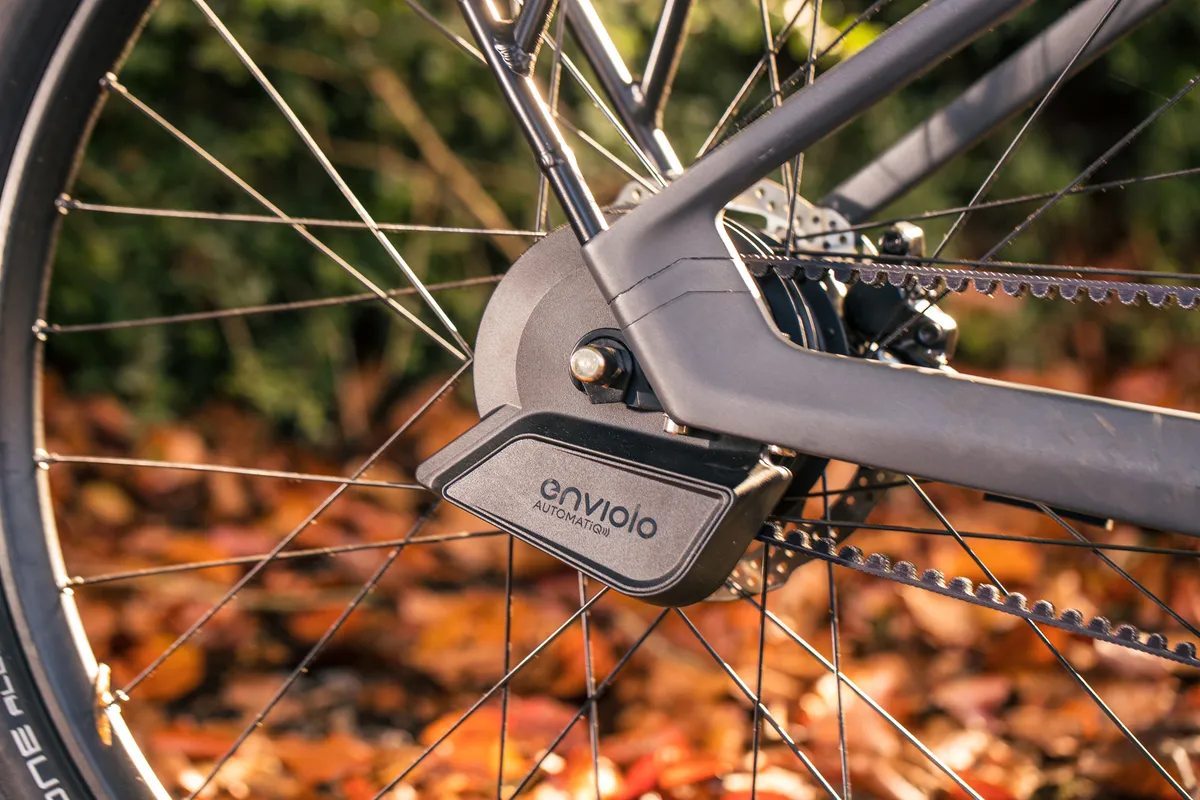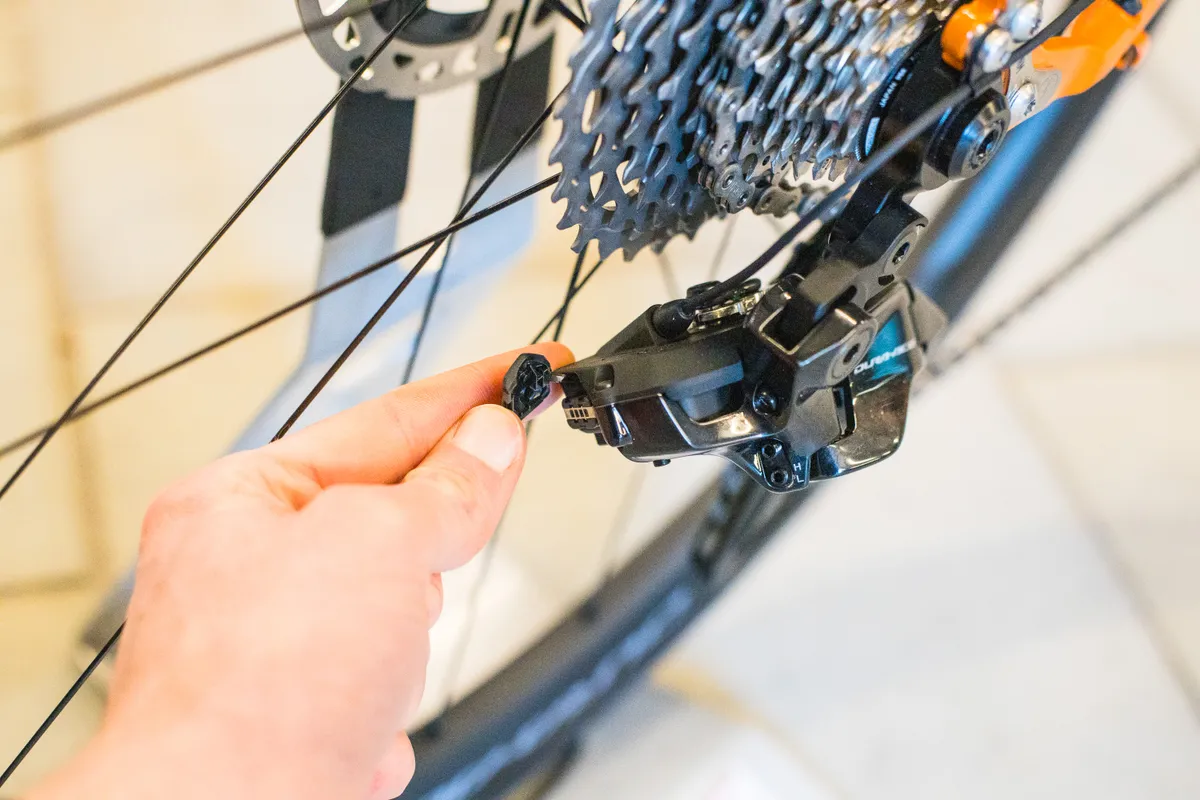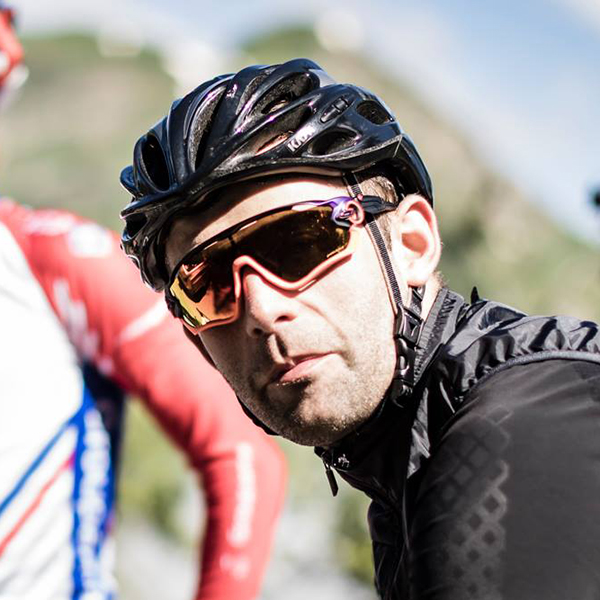Shimano has simultaneously launched its new flagship XTR Di2 M9200 wireless MTB groupset and Q’Auto – a new self-powered automatic shifting system for urban and gravel bikes.
Although XTR Di2 has been long-anticipated, it’s fair to say it doesn’t push any boundaries.
Q’Auto, on the other hand, launched to relatively minimal fanfare with a simple press release landing in my inbox last week.
However, I’m convinced that Q’Auto is the daring product XTR Di2 M9200 should have been – certainly, it could be one of the most important developments in cycling drivetrains in recent times.
Paradigm shift(ing)

Automatic shifting isn’t completely new, of course. Shimano already has Auto Shift and Free Shift in its technological arsenal. Auto Shift changes gears automatically based on factors such as speed and cadence, while Free Shift enables you to shift even while coasting.
Q’Auto integrates this automatic shifting tech with a dynamo in a Cues-branded rear hub. Crucially, this does away with the need for the electronic derailleur to be connected to a separate battery – power is instead generated by the rider.
This self-contained design is far more practical than any traditional battery system – riders don’t have to recharge it, meaning the derailleur is always ‘switched on’ and ready to shift.
Like modern cars, automatic gears also have the potential to make cycling in urban environments less complicated.

In short, make something easier and you tend to drive uptake, while one could argue that automatic electronic gearing is more in keeping with modern times than a manual system.
Even as a staunch supporter of cycling as a means of transport, I must admit it has something of an image problem – while a clean and eco-friendly way to get around, it remains an ‘alternative’ lifestyle choice in the vast majority of cultures, largely because of the enduring convenience, ease and social status of driving.
Technological innovations, such as Q’Auto, are part of the formula for cycling’s wider uptake. While not a silver bullet, its refinement (and application across non-assisted and electric bikes alike) could help make cycling more appealing.
Automatic shifting in racing?

Automatic shifting could be more controversial in racing.
In the early 2000s, Formula One teams developed fully automatic gearboxes for use in racing – but it didn’t take long for the governing body to ban them, largely because their presence took the skill onus away from the drivers.
In 2008, so-called ‘tech suits’ (racing suits made using non-textile fibres) were banned in swimming, for similar reasons, after an explosion in development.
In bike racing (and indeed, in many areas of amateur cycling), I suspect the same scenario would play out – we tend to pay respect to the riders on the bikes, professional or amateur, not the bikes themselves. Lest we forget, cycling is still an ‘analogue’ pursuit.

The UCI would also seem to agree: in a technical rule clarification published in October 2019, it stated that “The UCI Regulations assert the primacy of man over machine”.
It’s also possible the technology wouldn’t be practical for professional racing – the speed at which riders need to react to moments on the road leaves little room for mistakes or mis-shifts, for example.
That said, I’m intrigued by Q’Auto’s potential application for performance cycling. The door appears to be ajar for application here, given that the Q’Auto system is compatible with the brand’s entire range of Di2 shifters and switches, by dint of the Cues rear derailleur’s universal compatibility.

In theory, one could pair the Cues RD-U8050 rear derailleur with Dura-Ace ST-R9270 shifters, with the automatic shifting enabled by Q’Auto. What a mullet setup that would be!
However, compatibility has yet to be rolled out for ‘higher-spec’ 12-speed rear derailleurs, while Q’Auto has launched with ‘just’ a 1x configuration.
We may yet see 2x Q’Auto-compatible drivetrains in the not-too-distant future, and it’s not beyond the realms of possibility that Shimano could roll out native 1x systems at the racier end of the spectrum – a portion of the market SRAM has dominated to date. Could it then choose to target time triallists with its automatic-shifting technology?
Time will tell, but I’m excited to see what happens next for automatic shifting technology.





